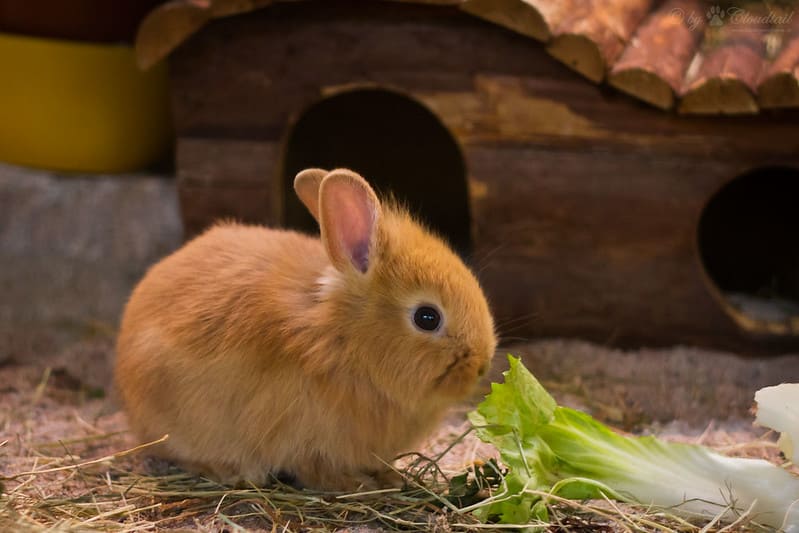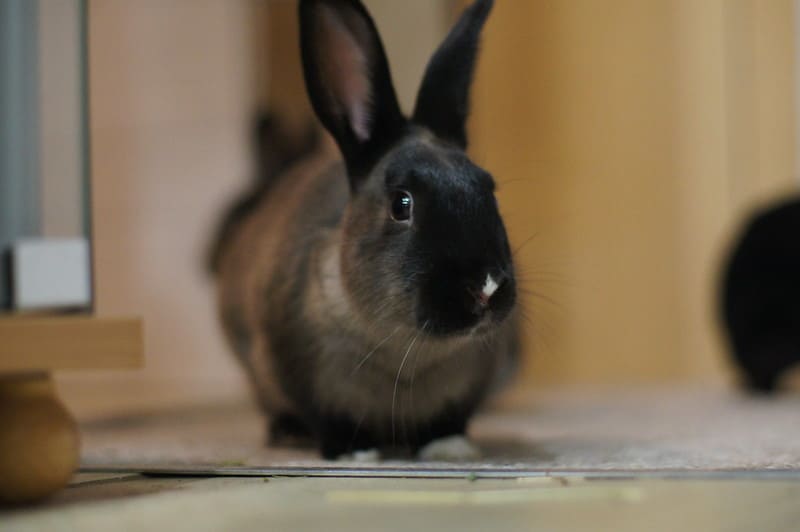The question of whether rabbits are good “starter” pets for kids is one that has been debated for many years. On one hand, rabbits are often seen as cute, low-maintenance animals that can teach children responsibility and empathy. On the other hand, rabbits require a significant amount of care and attention, and not all children are prepared for the responsibilities that come with owning a pet. In this comprehensive exploration of the topic, we will delve into the pros and cons of rabbits as starter pets for kids and provide valuable insights to help parents make an informed decision.

The Appeal of Rabbits as Pets for Kids
1. Adorability and Cuteness
One of the primary reasons parents consider rabbits as starter pets for kids is their undeniable cuteness. With their fluffy fur, twitching noses, and floppy ears, rabbits have a universal appeal, making them attractive to children and adults alike. Their charm can captivate children, which can be a motivating factor for parents who want to introduce their kids to pet ownership.
2. Low Maintenance
Rabbits are often considered low-maintenance pets compared to some other animals like dogs or cats. They don’t require daily walks, grooming, or litter box cleaning, which can be a relief for parents who may be concerned about the time and effort needed for pet care. Rabbits are also generally quiet animals, making them suitable for households where noise can be an issue.
3. Educational Opportunities
Rabbits can be a source of valuable learning experiences for children. They can teach kids about responsibility, empathy, and the importance of caring for another living being. Through their interactions with rabbits, children can learn about basic animal care, nutrition, and the importance of providing a safe and nurturing environment.
4. Indoor Living
Rabbits are primarily indoor pets, which can be advantageous for families living in apartments or homes without a yard. This means that even in urban settings, children can have a pet to care for and bond with, despite space limitations.
5. Lifespan and Commitment
Rabbits typically have a shorter lifespan compared to dogs and cats, which can be appealing to families who are not ready for a long-term commitment. The average lifespan of a pet rabbit is about 7-10 years, while dogs and cats can live significantly longer. This shorter commitment period may make rabbits more suitable for families who want to introduce their children to pet ownership without the prospect of caring for an animal for many years.

The Challenges of Owning Rabbits as Pets
While there are many advantages to having rabbits as pets, it’s important to recognize the challenges that come with these adorable creatures.
1. Allergies
Some children may develop allergies to rabbits or their fur, and parents need to be aware of this possibility. Allergies can cause discomfort for both the child and the rabbit, and managing these allergies can be a challenge.
2. Biting and Scratching
Rabbits have sharp teeth and strong hind legs, which they may use to scratch or bite if they feel threatened. While they are generally not aggressive animals, interactions with young children should be closely supervised to prevent any accidental injuries.
3. Handling and Socialization
Rabbits have specific needs when it comes to handling and socialization. They can be timid and easily stressed, so it’s crucial to teach children how to interact with them gently and calmly. Rabbits require regular socialization to become accustomed to human contact, and parents need to invest time in this process.
4. Chewing and Digging
Rabbits have a natural instinct to chew and dig, which can be problematic when it comes to keeping them in a home environment. They may chew on furniture, cords, and other household items, potentially causing damage. Digging can also be an issue, especially if a rabbit is not provided with an appropriate outlet for this behavior.
5. Space and Housing
While rabbits are often kept indoors, they still require a dedicated living space that provides room to hop, play, and stretch their legs. Many families underestimate the amount of space rabbits need. Proper housing, such as a rabbit hutch or pen, is essential to ensure their well-being.
6. Diet and Nutrition
Rabbits have specific dietary needs. Their diet should consist mainly of hay, fresh vegetables, and a small amount of rabbit pellets. Parents and children must be willing to educate themselves about rabbit nutrition and provide the right food to keep their pets healthy.
7. Veterinary Care
Like any pet, rabbits require regular veterinary care to maintain their health. This includes vaccinations, spaying or neutering, and treatment for common health issues. Parents should be prepared for the financial responsibility of caring for a rabbit’s medical needs.
8. Lifespan
While a shorter lifespan can be an advantage, it can also be a challenge for children who may not be emotionally prepared for the eventual loss of their pet. Parents need to help children understand the natural cycle of life and death and provide support during difficult times.
Assessing Your Child’s Readiness for a Rabbit
Before getting a rabbit as a pet for your child, it’s essential to assess their readiness and willingness to take on the responsibilities associated with rabbit ownership. Here are some factors to consider:
1. Age
Young children may not be developmentally ready to care for a pet rabbit. Rabbits require gentle handling, patience, and consistency, which may be beyond the capabilities of very young children. It’s important to evaluate your child’s maturity and ability to follow instructions before getting a rabbit.
2. Allergies
Consider whether your child has any allergies to rabbits or hay, which is a common component of a rabbit’s diet. Allergies can affect both the child’s health and the rabbit’s well-being.
3. Commitment
Talk to your child about the long-term commitment involved in rabbit ownership. Are they willing to care for the rabbit for its entire lifespan? Discuss the importance of daily care, regular vet visits, and other responsibilities.
4. Responsibility
Assess your child’s ability to take on responsibilities like feeding, cleaning, and providing social interaction for the rabbit. Do they understand the importance of these tasks?
5. Temperament
Consider your child’s temperament and personality. Some children may be naturally more patient and gentle, while others may be more excitable or rough in their interactions.
6. Education
Before bringing a rabbit into your home, educate your child about rabbit care. Read books, watch videos, and visit a local animal shelter or rescue to learn about the responsibilities and challenges of rabbit ownership.
7. Parental Involvement
Recognize that, regardless of your child’s readiness, you will likely need to be actively involved in rabbit care and supervision. Are you prepared to take on this responsibility?

Alternatives to Rabbits as Starter Pets
If you determine that a rabbit may not be the ideal starter pet for your child, there are alternative options to consider:
1. Guinea Pigs
Guinea pigs are small, gentle, and relatively low-maintenance pets that can be a good choice for kids. They are less likely to bite or scratch, and they enjoy social interactions with humans.
2. Hamsters
Hamsters are another small pet that can be a suitable introduction to pet ownership for children. They are nocturnal animals, which may fit well with a child’s schedule, but they are typically more independent.
3. Fish
Fish are low-maintenance and can teach children about responsibility and care. However, they don’t provide the same level of interaction and companionship as mammals.
4. Birds
Birds like budgerigars (parakeets) can be engaging pets that can teach children about responsibility. However, birds require proper cage maintenance and can be noisy.
5. Reptiles
Reptiles such as turtles, geckos, or bearded dragons can be interesting pets for children who are interested in a more exotic choice. They are typically low-maintenance but may not offer the same level of interaction as mammals.
Tips for Successful Rabbit Ownership
If you decide that a rabbit is the right pet for your child and family, here are some tips for successful rabbit ownership:
1. Educate Yourself
Before bringing a rabbit home, educate yourself and your child about rabbit care, behavior, and needs. Consider reading books, consulting with a veterinarian, and connecting with rabbit rescue organizations for guidance.
2. Prepare the Environment
Set up an appropriate living space for your rabbit. This should include a clean and safe hutch or pen with ample space for exercise and exploration. Provide proper bedding, food, water, and enrichment.
3. Choose the Right Rabbit
Consider adopting a rabbit from a shelter or rescue organization. They can help you find a rabbit with a suitable temperament for a family with children. Avoid buying from pet stores or breeders, as this can contribute to overpopulation.
4. Supervise Interactions
Always supervise your child’s interactions with the rabbit, especially in the beginning. Teach your child how to approach the rabbit calmly and gently.
5. Socialize Your Rabbit
Spend time socializing your rabbit and building a bond with it. This can help reduce stress and anxiety in the rabbit and create a positive relationship with your child.
6. Encourage Responsibility
Assign age-appropriate responsibilities to your child, such as feeding, cleaning, and providing social interaction. Use the care of the rabbit as a teaching tool for responsibility and empathy.
7. Provide Veterinary Care
Schedule regular check-ups with a veterinarian who specializes in small animals or exotics. Keep up with vaccinations and preventive care.
8. Prepare for Changes
As your rabbit grows and matures, be prepared for changes in behavior and needs. Adolescence can bring about some challenging behaviors, so it’s important to stay patient and adaptable.
9. Be Ready for the Long Term
Rabbits can live for several years, so be prepared for the long-term commitment. Discuss this with your child to ensure they understand the ongoing responsibility.
10. Consider Adopting in Pairs
Rabbits are social animals and often do better when kept in pairs. If your child is ready for the added responsibility, consider adopting two rabbits that get along.
Conclusion
The question of whether rabbits are good “starter” pets for kids is not a one-size-fits-all answer. While rabbits can make wonderful pets that provide educational opportunities, companionship, and life lessons for children, they also come with specific challenges and responsibilities that must be carefully considered. Parents should assess their child’s readiness, educate themselves about rabbit care, and be willing to provide the necessary support and supervision.
Ultimately, the success of rabbit ownership as a starter pet for kids depends on the unique dynamics of each family, the individual child’s readiness, and the commitment of the parents. When approached with care, knowledge, and a genuine dedication to the well-being of the rabbit, they can be a fantastic addition to a family, teaching children valuable life skills and providing lasting companionship.